|
Mauser G98 used by the East Asian Expeditionary
Corps
Photos ©
Vincent Koch
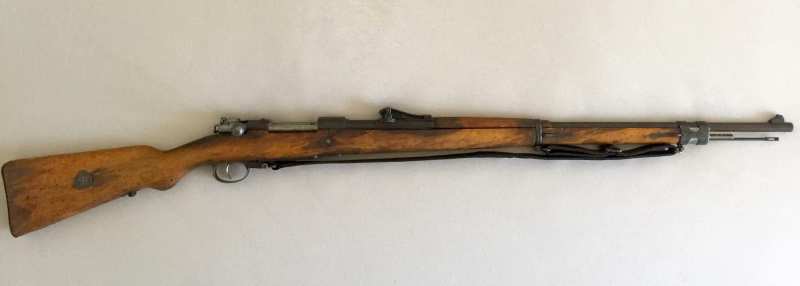
In 1898 the German army adopted a
new Mauser rifle. This latest design had several improvements
over previous Mauser rifles and the Gew88 with an internal magazine,
better safety features and improved bolt action. The first issue of the Gew98 for
active service was to the East Asian Expeditionary Corps prior
to embarkation for China in 1900. From 1905 a new 7.92mm
S-cartridge (S for Spitzer or pointed) was introduced to
replace the previous 8mm rounded bullets. After that
date all new rifles were made for this ammunition and
old rifles in Germany were converted to take it. The G98 remained
the main weapon of the German Infantry up to and during the
First World War. Vincent
Koch has provided us with some information on this particular
weapon:
"The rifle itself is sadly
enough in a bad condition. It was found 20 years ago in a barn
in Alsace in France, former territory of Germany. I donít know
how long it laid there.
It was produced in 1900 in Spandau and has the serial number
7357. It was part of the East Asian Expeditionary Corps in 1900. The
unit marking is "1. O.R. 4.116" (for the 1st East Asian Infantry
Regt, 4th Coy, weapon number 116), formed out of the Imperial Guard
in Berlin.
The markings were later crossed out when the rifle returned to
Germany
either in 1901/02 or it was still part of the Occupation Brigade
and returned to Germany in 1906. In Germany, the rifle was transformed to the S-cartridge and had the sights
changed from former 200-2000 meters to 400 to 2000 meters and an
S stamped on the receiver.
Interestingly enough it was not reissued to the German army
again since there are no other unit markings on the stock plate.
I donít know why they modernized it with the new S-cartridge but
didnít used the rifle afterwards, nor can I tell if the rifle
saw service in the First World War."
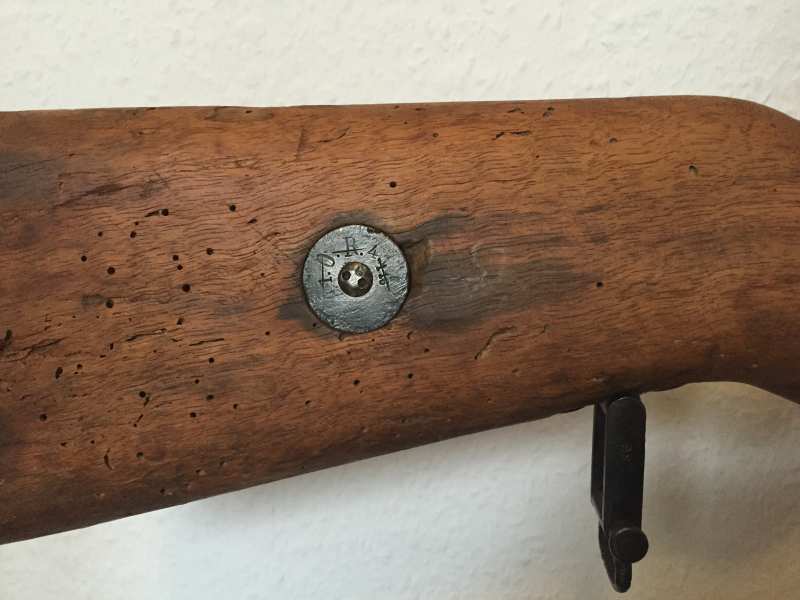
The photograph above shows the disc in
the butt of the rifle. It has the cancelled unit marking "1. O.R.
4.116" (for the 1st East Asian Infantry Regt, 4th Coy, weapon
number 116). Notice also the woodworm having eaten into the butt
over the years.
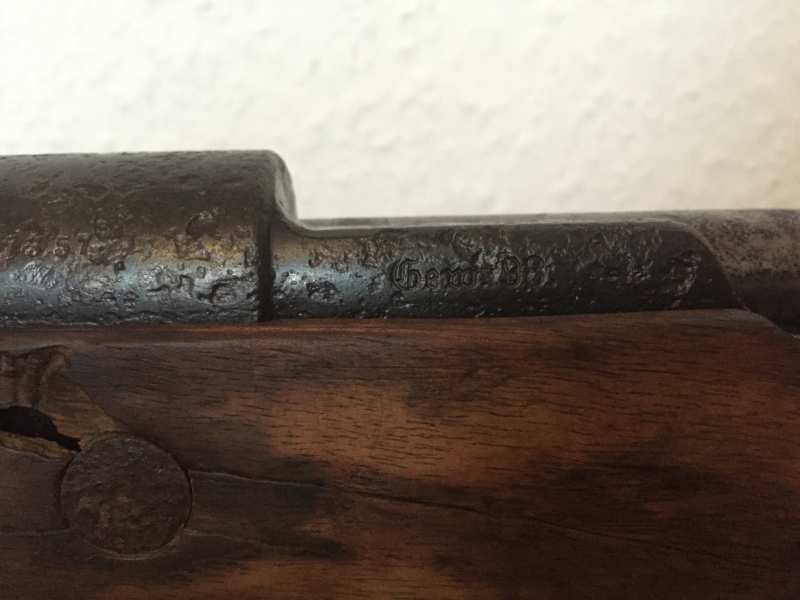
The photograph above shows the
breech of the rifle, marked "Gew 98". Notice also a large crack
in the wood of the stock.
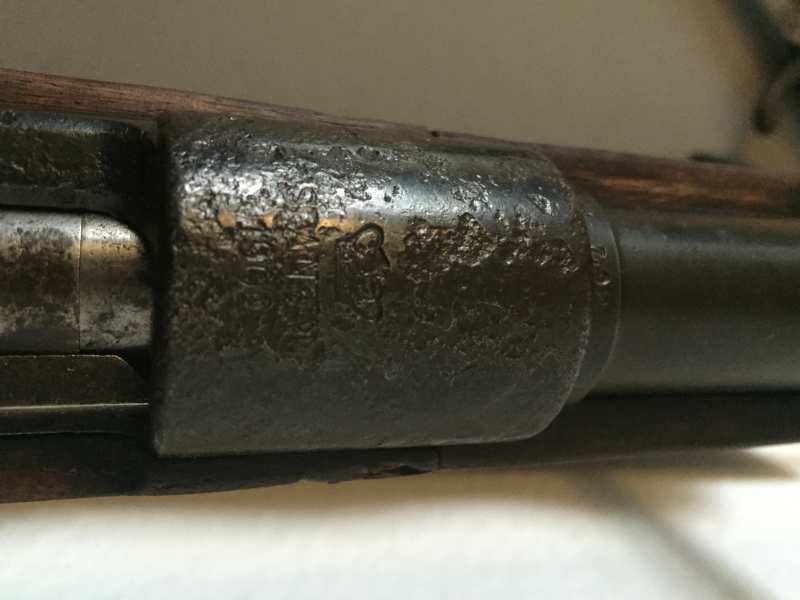
The photograph above shows the
crowned factory marking and date as "SPANDAU 1900"
showing that the rifle was made at the Royal Armaments works
at Spandau, in Berlin, 1900. Just ahead on the barrel is the
calibre marking in millimetres: "7.92".
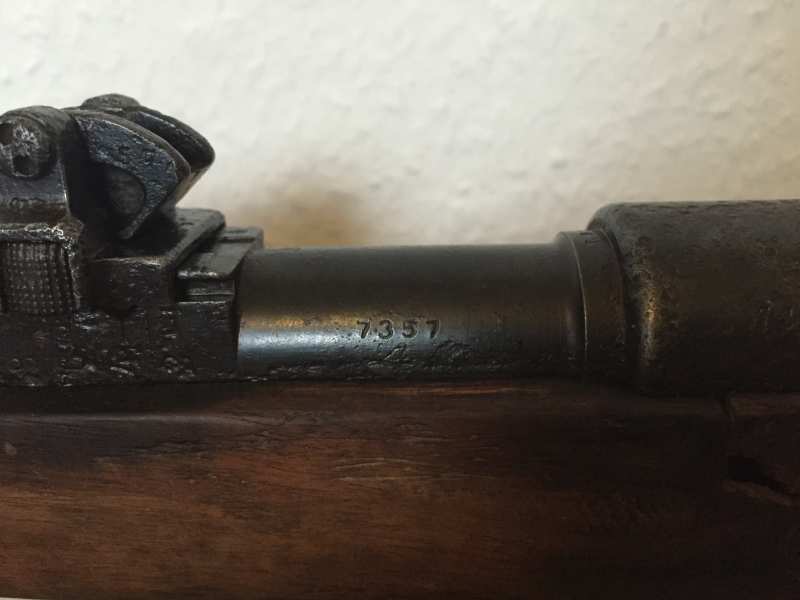
The photograph above shows the
weapon number marked as "7357".
|